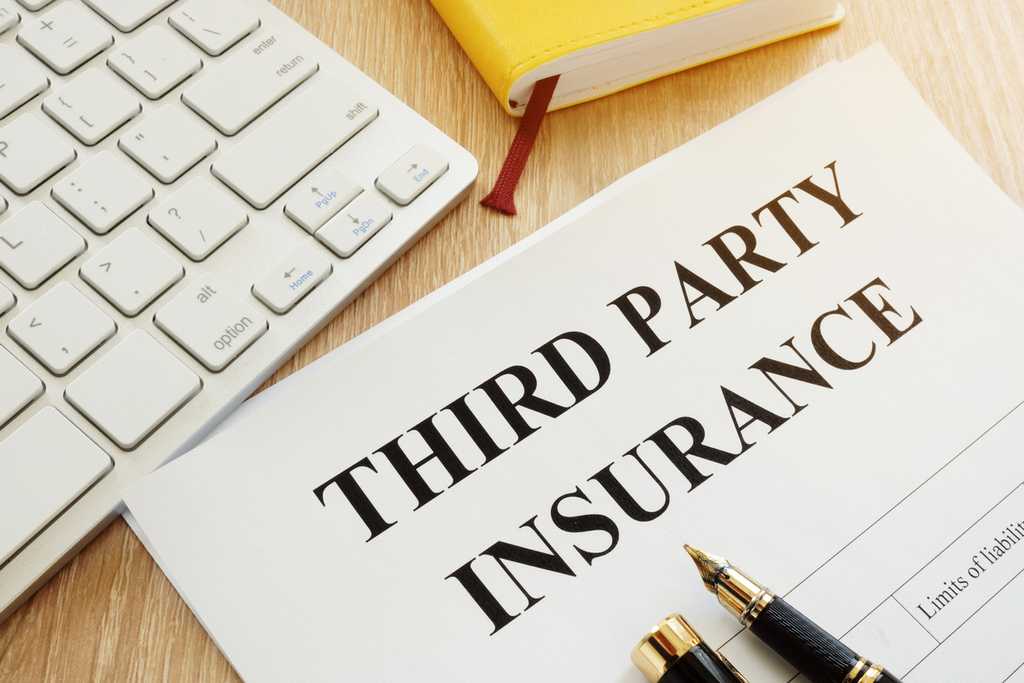Accidents can lead to lawsuits and huge medical bills. That’s where insurance comes in – to protect you if you accidentally hurt someone else or damaged their property. Part of a car insurance policy includes third-party liability coverage, which can protect you if you hurt someone or end up damaging their property.
What Is Third-Party Insurance?
Third-party insurance is a type of liability insurance where the insured, the first party, buys a policy from an insurance company, the second party, to protect someone else, the third party, if they are hurt or their property is accidentally damaged by you.
In most cases, third-party insurance is standard for auto insurance and is typically required in most states. You can also buy liability insurance for your homeowner’s policy to protect against damages incurred by others on your property.
How Does Third-Party Liability Coverage Work?
Third-party liability coverage pays for damages, losses and medical payments for the person affected who is not on your policy. Once a claim is filed and approved, your insurance company will arrange for payment up to policy limits.
Some examples of when your third-party liability coverage would kick in include:
- Your car goes out of control and ends up hitting your neighbor’s fence
- A visitor slips and falls on your driveway and their arm is broken
- You end up in a car accident and a passenger in another vehicle ends up injured
Types of Third-Party Insurance Coverage
There are several different types of third-party insurance coverage, including bodily injury, liability, and property damage. The specific coverage will differ depending on the type of insurance.
Auto Insurance
- Bodily Injury: You’ll be covered if another person is physically injured if you’re found responsible for the accident. Limits are usually based on the number of people involved and for each accident. Your policy could cover medical expenses and lost income.
- Liability: If the third-party sues, your policy could pay for legal expenses, including settlements, up to your policy limit.
- Property Damage: Any damage to property that’s not yours is typically covered, such as the third party’s car, lamp posts, or home fencing if you damaged it as a result of the car accident.
Homeowners Insurance
- Medical Costs: Like auto insurance your policy will pay for medical bills for others who were injured on your property.
- Liability: Coverage may include a third-party’s lost wages, pain and suffering, and the cost of legal defense.
- Property Damage: If you caused damage to someones’ property at your home, your insurance policy may pay for it up to the policy limit.
Business insurance
- Liability: This third-party coverage is more comprehensive in that it protects your business when it ends up causing harm to others. This includes when someone slips and falls in your store, damage from defective products, harm caused by an employee, and more.
Umbrella Insurance
Umbrella insurance can be purchased to increase the coverage amounts for your insurance policy. It kicks in when you reach your policy limit.
Should You Get Third-Party Insurance?
Getting third-party insurance coverage is a smart idea if you want to make sure you’re well protected. In many states, liability coverage is required by law. For instance, drivers need to have a minimum amount of bodily injury and property damage liability coverage. Minimums depend on the state.
For homeowners, if you have third-party insurance, you’re protecting your assets. If someone decides to sue you, you could be at risk of losing a lot of money. For those who have families who rely on your income, or you have a large amount of assets, getting third-party liability coverage is probably a good choice.
How to file a third party insurance claim
If you’re the one who caused the accident, you don’t need to file a third-party insurance claim —that’s for those who are in an accident caused by the insured. If that’s you, you’ll need to file the claim with the insured’s insurance company. That’s why when an accident occurs, it’s crucial you exchange information, especially insurance details.
When you file the claim, it’s probably best to contact your insurance company to let them know what you plan on doing, since the other insurer will most likely contact them to determine who is responsible for the damage or injury.
To file a claim, you can either call the insured’s insurance company or head to their website and find the appropriate online form. You will most likely need to provide the following information:
- The insured’s name and contact details like their phone number
- Their home address if it’s for homeowners insurance, or license and registration information for an auto accident
- Their insurance information such as policy number
- Photos of the scene of the accident and damage
- Police report if applicable
- Other types of proof like witness statements if applicable
You can consider filing an accident report at your local police station for a record of what happened if there isn’t a police officer at the scene.
Once you file the claim, the insured’s insurance company typically assigns an adjuster to investigate the incident, determine the party at fault, and estimate repair or medical cost. If you’re not at fault, the insurance company will arrange payment by either sending you a check or directly paying for medical or repair bills — the exact amount will depend on the at-fault party’s policy limits.

